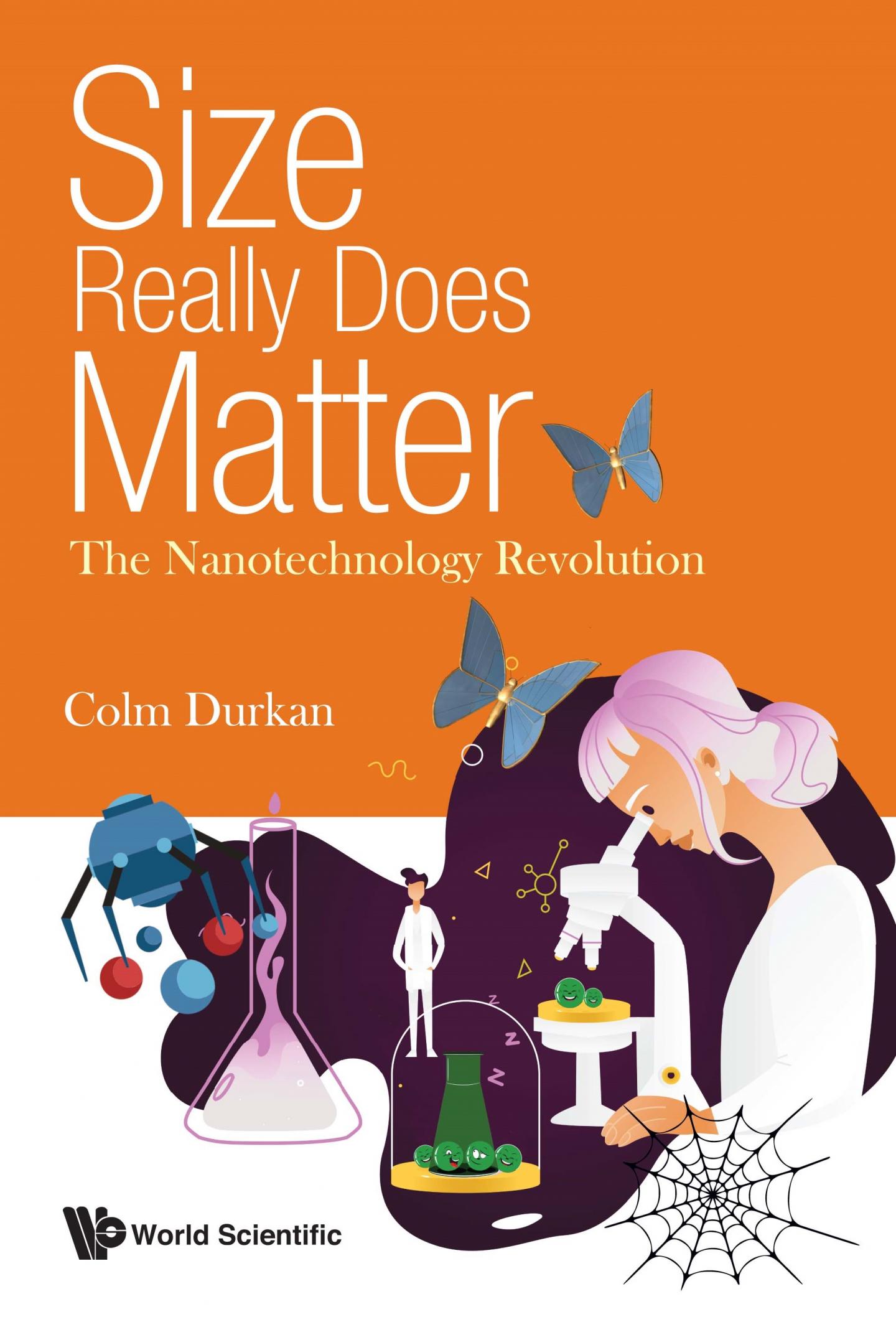
Credit: World Scientific
Nanotechnology is a buzz word many of us have heard but are uncertain as to what it really means. It is an area of research that generated an enormous amount of hype in the early 2000s, and since then has touched on many aspects of our everyday lives without our even realizing. It is a field that brings together aspects of physics, chemistry, biology, engineering and medicine. Although it is recognized that it was kick-started by the invention of the Scanning Tunneling Microscope (STM) in the early 1980s, there are examples of applications of nanotechnology, albeit unwittingly, going back Millenia. Size Really Does Matter: The Nanotechnology Revolution gives an account of the origins of the field, presented from the standpoint of fundamental science. The book shows how nanotechnology is, in fact, an inevitable consequence of our desire to make ever smaller things.
Written by Dr Colm Durkan, Reader in Nanoscale Engineering at the University of Cambridge, the book tells the story of the development of nanotechnology starting with medieval times and the beginnings of the scientific method, to an overview of classical science and then moves onto how the discovery of quantum mechanics at the turn of the 20th century turned all of this on its head. This opens the window into the fact that small (i.e. nanometre-sized) objects behave differently to larger objects, which is the founding principle of nanotechnology. There are detailed discussions on nanomaterials and how the properties of materials can be tuned by changing their size, with plenty of everyday examples; how we explore and see nanostructures, as they are too small to see using conventional microscopes; how nanotechnology has revolutionized the electronics and semiconductor industry, how it is being used in medicine to diagnose and treat disease and finally, on the risks associated with the uncharted properties of highly-reactive nanoparticles. The book is firmly rooted in fact and works to dispel the myths and unravel the truth about this branch of science and technology that has already touched many aspects of our lives.
Size Really Does Matter is written in an accessible style with genuine enthusiasm for the topics it addresses, and is aimed at the general reader, but with plenty to keep undergraduates on their toes. Dr Durkan was inspired to write this book having given many talks on nanotechnology to lay audiences, during which he saw that there was a real appetite amongst the general public to find out more without being lost in details or being patronized.
This book retails for US$58 / £38. To know more about the book visit https:/
###
About The Author/Editor
Colm Durkan is a Reader in Nanoscale Engineering at the University of Cambridge and a fellow of Girton College, where he is a Director of Studies, a tutor and leads Engineering admissions. Originally from Dublin, he obtained his primary degree in Physics from Trinity College Dublin in 1992. He was also a Trinity College Foundation scholar, and was the recipient of the Fitzgerald medal in 1992. He obtained his PhD in Physics, also from Trinity College, on the topic of Scanning near-field optical microscopy (SNOM) in 1996. After spending a postdoctoral stint at Konstanz University in Germany, during which time he was awarded an Alexandar von Humboldt visiting fellow’s scholarship, he came to work in Cambridge in August 1997 as a postdoc jointly between Engineering & Chemistry. He has delivered a course on nanotechnology and quantum phenomena to Masters level students for nearly 20 years, and developed and delivered the undergraduate introductory course in circuit analysis. He has authored a textbook on nanoelectronics, also published by World Scientific, entitled Current at the Nanoscale: an introduction to nanoelectronics, now in its second edition, and is currently writing an undergraduate textbook on circuit analysis. He has authored over 100 papers in scientific journals and has delivered over 100 talks. He was elected to a fellowship of the Institute of Physics in 2009 and the Institute of Engineering & Technology in 2014. His current research touches on surface interactions, properties of graphene devices, and on mapping and manipulating the physical properties of nanostructures and surfaces. Colm lives in Cambridge with his family and a crazy dog and in order to keep fit and healthy as well as sane, he trains in and teaches Karate a few times a week.
About World Scientific Publishing Co.
World Scientific Publishing is a leading international independent publisher of books and journals for the scholarly, research and professional communities. World Scientific collaborates with prestigious organisations like the Nobel Foundation and US National Academies Press to bring high quality academic and professional content to researchers and academics worldwide. The company publishes about 600 books annually and 140 journals in various fields. To find out more about World Scientific, please visit http://www.
For more information, contact Amanda at [email protected].
Media Contact
Amanda Yun
[email protected]
Original Source
https:/



